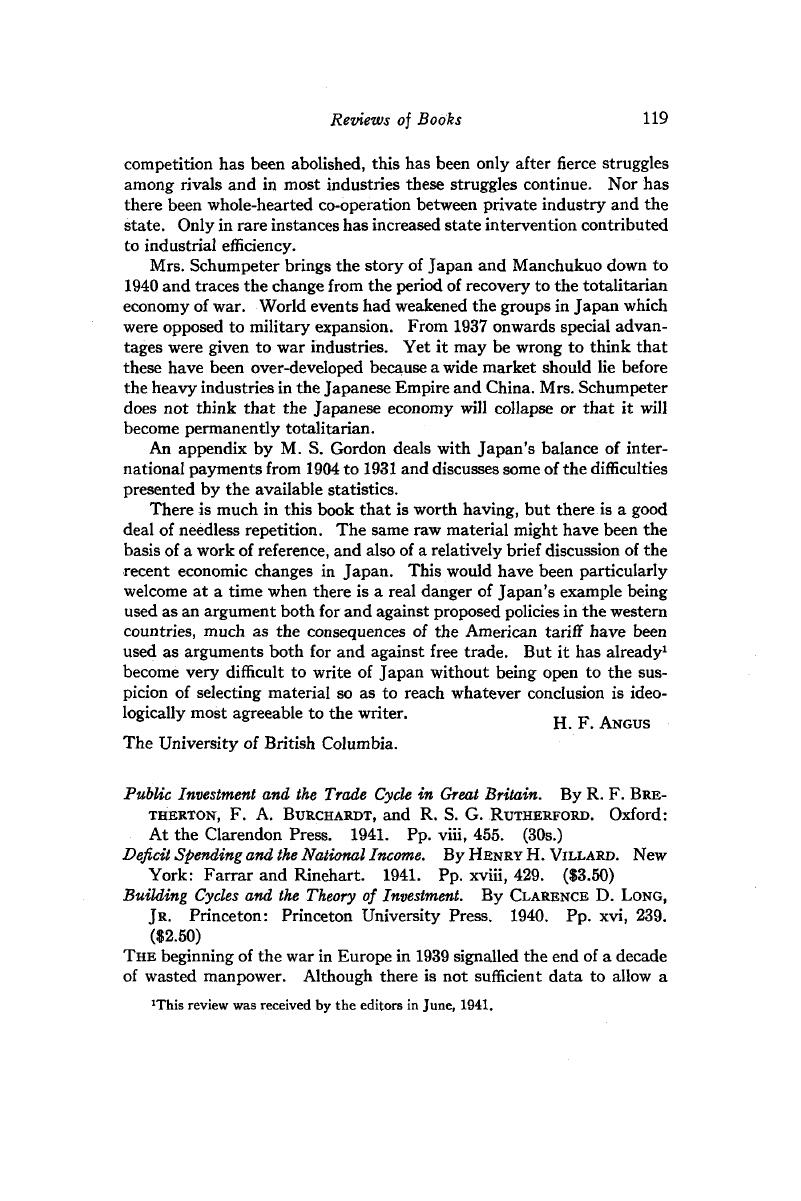No CrossRef data available.
Article contents
Public Investment and the Trade Cycle in Great Britain. By R. F. Bretherton, F. A. Burchardt, and R. S. G. Rutherford. Oxford: At the Clarendon Press. 1941. Pp. viii, 455. (30s.) - Deficit Spending and the National Income. By Henry H. Villard. New York: Farrar and Rinehart. 1941. Pp. xviii, 429. ($3.50) - Building Cycles and the Theory of Investment. By Clarence D. LongJr. Princeton: Princeton University Press. 1940. Pp. xvi, 239. ($2.50)
Published online by Cambridge University Press: 07 November 2014
Abstract

- Type
- Reviews of Books
- Information
- Canadian Journal of Economics and Political Science/Revue canadienne de economiques et science politique , Volume 8 , Issue 1 , February 1942 , pp. 119 - 123
- Copyright
- Copyright © Canadian Political Science Association 1942
References
page 119 note 1 This review was received by the editors in June, 1941.
page 122 note 1 In explaining why too much emphasis has been put on public works, Professor Villard goes too far. It is clear that the predictability of business cycle movements is very difficult, and also that public works form only part of a deficit spending programme. However, if a certain level of government works in relation to the national income is granted, then surely it is desirable to concentrate these works in times of depression. Professor Villard scoffs at the idea of lessening the construction activities of the late twenties on the grounds that the recession might have developed earlier. Perhaps it would have been better if this had happened. Perhaps the economy was too much out of balance, and if the recession had come sooner it might have been less severe. After all, part of the severity of the subsequent depression was the result of the fact that as so much construction had been done, further outlays of this sort could be longer postponed during the depression years.




